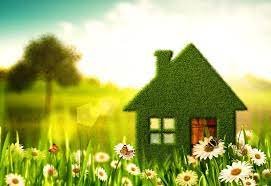Published on September 30th, 2023
What does a healthy home look like?
As we mentioned a healthy home is one that operates with a top level of insulation, ventilation, heating and air tightness. This ensures that your home is not only good at lowering your bills and carbon emissions, it's good for your comfort and your own health too. Let’s break that down a bit further.

As we mentioned a healthy home is one that operates with a top level of insulation, ventilation, heating and air tightness. This ensures that your home is not only good at lowering your bills and carbon emissions, it's good for your comfort and your own health too. Let’s break that down a bit further.
What good insulation looks like:
Good insulation has multiple benefits for your home’s health and your own health.
It includes consistent temperature control, which is achieved by preventing heat transfer (heat leaving your home) and maintaining interior comfort all year-round. Energy efficiency is also a defining feature, significantly reducing your energy costs by reducing the amount of heating and cooling you need to maintain a comfy temperature around the house. This in turn reduces your energy bills and your carbon emissions as you use less energy to power your home.
Good insulation also reduces air leaks, ensuring drafts and cold patches aren’t a thing in your home. Its moisture control properties avert condensation and mould, preserving indoor air quality and structural integrity.
Noise reduction is an added benefit, keeping the sound from outside, outside (and if you’re planning a party you shouldn’t keep the neighbours up either).Insulation also provides more durability to your home, keeping your home’s overall health at a higher level. Top insulation delivers comfort, cost savings, environmental responsibility, and lasting performance through meticulous installation and maintenance.
What good ventilation looks like:
Primarily, good ventilation means that you have high quality outdoor air coming into the home which in turn is good for your own, human ventilation. Good ventilation also reduces the amount of moisture built up in a home, the kind of moisture that leads to mould and mildew, and damp which can cause structural damage. And is, in many ways, the most visible sign of an unhealthy home.
Good ventilation often includes good filtration too, so you can keep out pollutants if you live in a built up area with traffic. Ventilation should also help your home become more energy efficient as it remains cooler during hotter days and helps retain heat while also having fresh air come in on colder days, so you use less energy to heat and cool your home, again reducing your carbon emissions and your bills.
What good heating looks like:
Nothing is so central as heating when it comes to home health. Having an efficient heating system is often the first thing people think of when they consider their bills and home comfort. And it’s true, the better the boiler the less you should be paying to heat your home.
This efficiency could come in the form of a modern boiler or it could be a heat pump. A heat pump is considered more efficient as it generates more energy than it uses by taking natural outside energy (from the ground or air) and powering your home - cleanly. Just make sure you have the right piping, radiators and insulation to make the most of a heat pump if you get one.
The knock on effect is also in creating a warm comfortable environment for yourself that benefits your own health. If you’re less cold in winter or hot in summer, you and yours are capable of living a more fulfilling life, showing the intrinsic link between your home’s health and, yes, your own health.
What good air tightness looks like:
Top quality air-tightness means you aren’t losing heat out of your home. Which means you’re spending less on heating it in the first place as the heat is better contained. It also means that you aren’t getting hot, humid air from outside coming in in summer, so overall you’ve got a nicely regulated house.
Again this means better comfort for you and your family as you have a maintained level of heat. It also means that your bills are lower as you generate less energy to get your home to a certain temperature, which in turn means less carbon being emitted from your household.
The wider benefits are that you have a more comfortable living space, which is better for your health and that your home is less likely to succumb to creaks and breaks from air getting into the fabric of the house. This means you’ll spend less on repairs in the future.
If you’re looking for a diagnosis on your home’s health you can book a Home Energy Assessment with us, where an accredited surveyor will tell you exactly where your property can be improved and provide you with a plan on how to take the property forward and make it more energy efficient. You can book an assessment here.
Written by

Oisin Teevan